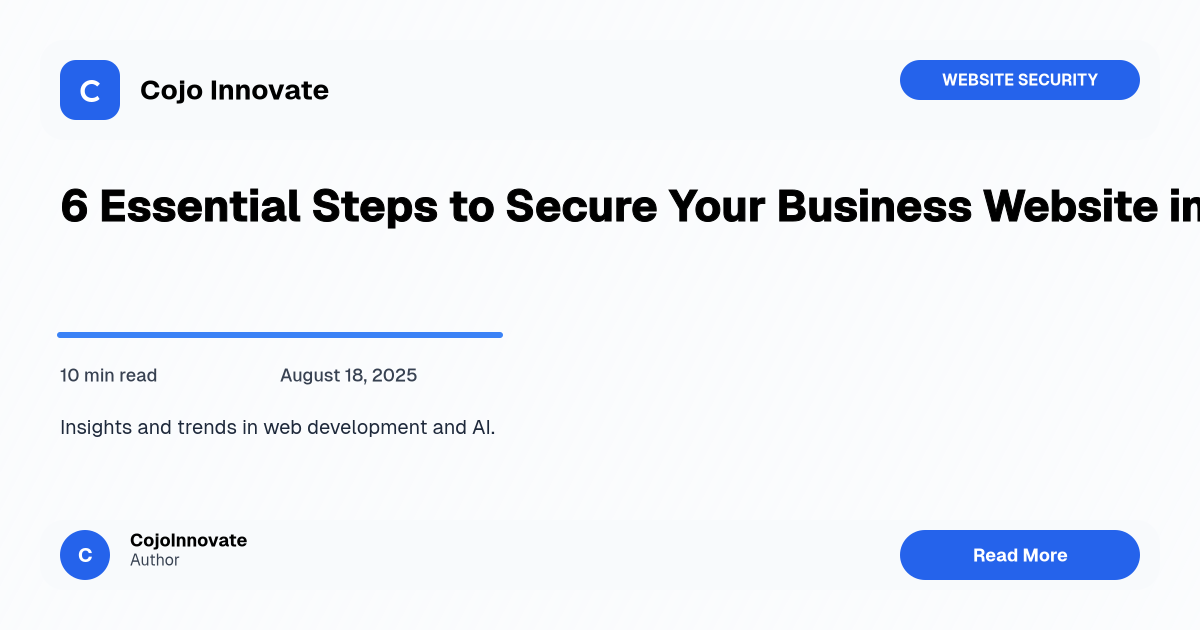Processing content...
6 Essential Steps to Secure Your Business Website in 2025
Protect your business website from cyber threats with these 6 essential security steps. Learn about SSL certificates, data protection, and security best practices for 2025.
Website Security
6 Essential Steps to Secure Your Business Website in 2025
Protect your business website from cyber threats with these 6 essential security steps. Learn about SSL certificates, data protection, and security best practices for 2025.
7 min read
Tags
website securitycybersecuritySSL certificatesdata protectionbusiness security2025 securitycyber threatswebsite protectionsecurity best practicesbusiness websitedata securitycyber safetywebsite maintenancesecurity protocolsbusiness protection
